How Long Was The B 58 In Service
The Cold War was probably the nigh interesting and eclectic time to be an aviation fan. Because on both sides of the conflict, the war machine side of aviation technology was being pushed to its limit. The Soviet Union and the West wanted the all-time aircraft possible and this gave united states aircraft like the MiG-21, the Avro Vulcan and the B-52. Those final two aircraft are big, strategic bombers, and one of the about unusual and outrageous strategic bombers of the whole conflict was the Convair B-58 Hustler.
This supersonic was ane of the maddest bombers ever built. Information technology first flew in November 1956 and was intended to be a replacement for the B-47 Stratojet. Notwithstanding, the much slower and bulkier B-52, the B-47s successor, is all the same in service, whereas, the B-58 was retired afterward just over 10 years of service in 1970. That is an incredibly short service life for an aircraft that was, at the time, one of the near advanced bombers ever built. But there were multiple factors at play as to why this was not a successful bomber, and it all conspired to mean the B-58 had an incredibly short service life.
Origins And Evolution Of The B-58
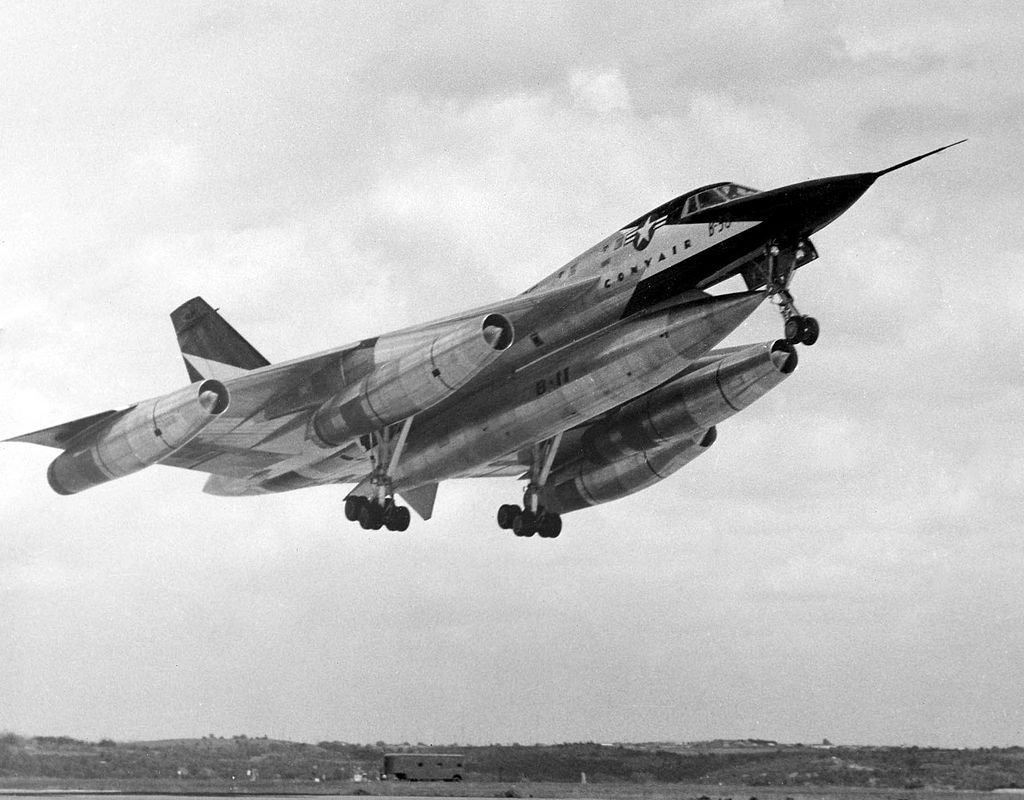
The B-58 came about after the Generalized Bomber Study of 1949 by the Air Research And Development Command at Wright-Patterson Air Force Base. This called for the development of a long-range, manned supersonic bomber. There was some skepticism whether such an aircraft could exist congenital, merely aircraft companies such as Convair, Boeing and Douglas all submitted bids for the contract. In the end, the Air Forcefulness chose the Boeing MX-1712 and Convair MX-1626 proposals to progress to the next stage, and in 1952 it was decided that Convairs design was superior. Boeing had already got the B-52 contract, so it was perhaps viewed they were best left to get on with that.
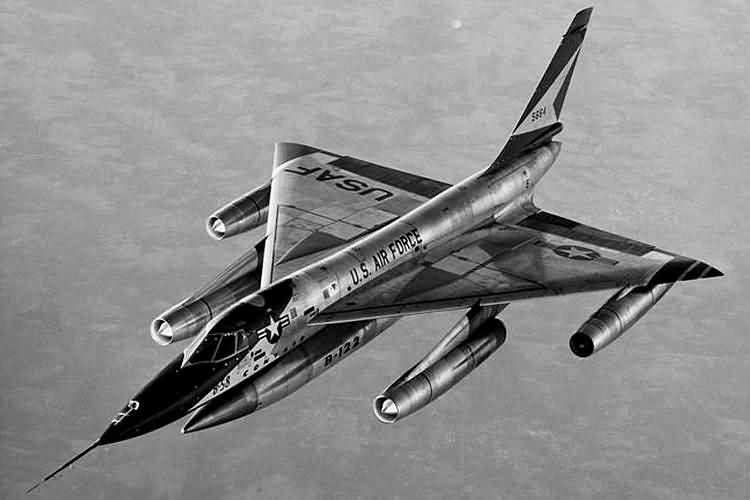
The contract to build what would now exist called the B-58 was issued in February 1953, and what Convair built was a high-speed strategic bomber, with high altitude and Mach 2 capabilities. Like Britain's Vulcan, it had a big delta wing, the B-58s wing having a leading-edge swept to 60 degrees. Power for the aircraft came from four General Electric J79-GE-ane turbojet engines with reheat, and surprisingly the B-58 was highly effective at low-distance, its delta wing being quite well suited to the lower levels. So, things are looking good right at present for the Hustler.
The Hustler In Operational Service
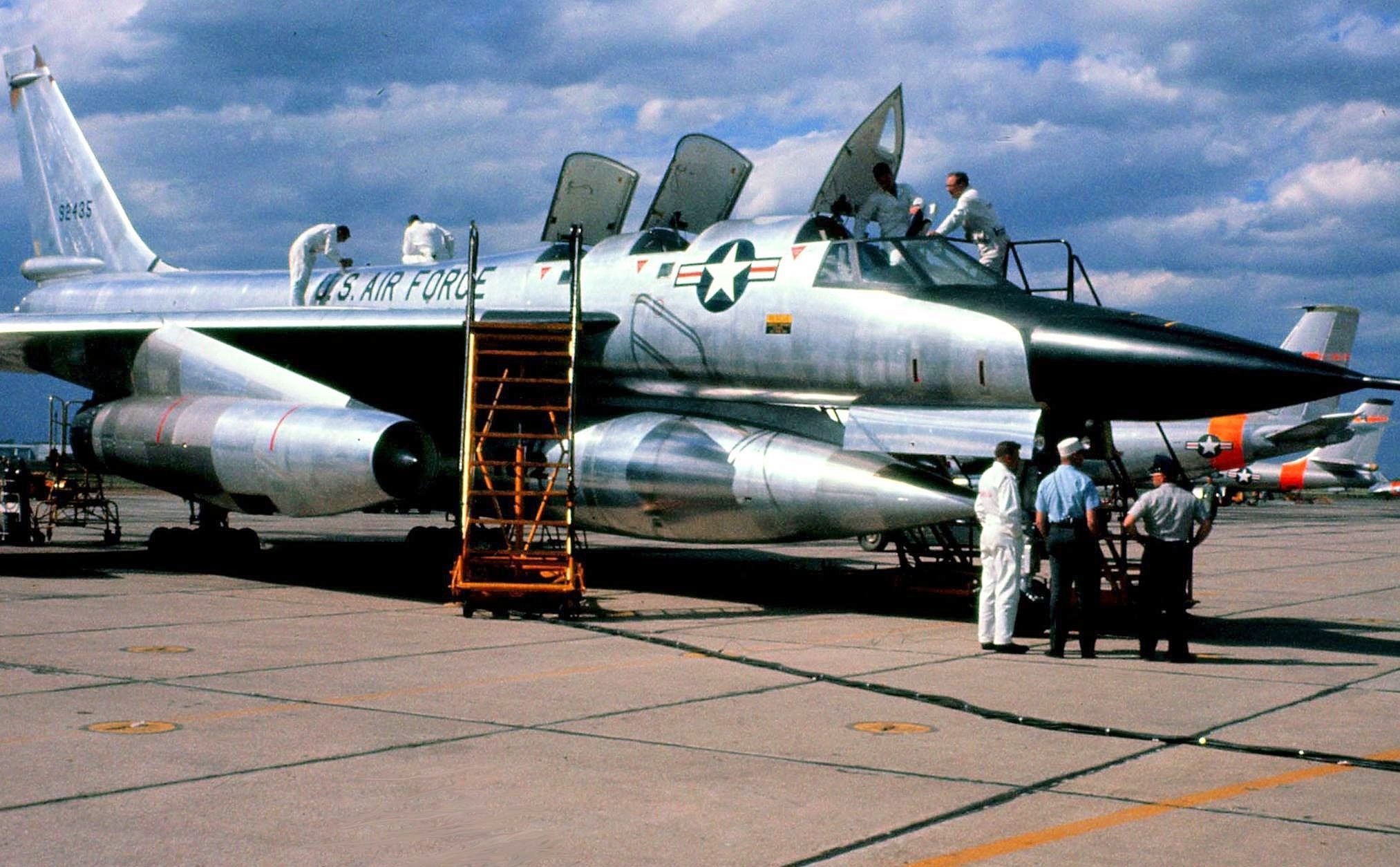
The aircraft entered operational service in Baronial 1960, and things looked skillful initially. During the SAC Combater Competition in September 1960, a single B-58 went up against the B-47 and B-52. It proved to be superior to both aircraft, securing commencement place in the high-level and depression-level radar bombing exercises. The performance of the Hustler was plant to be truly exceptional, with a lightly loaded B-58 able to climb at near 46,000 ft/min, but soon the deficiencies of the aircraft started to show.
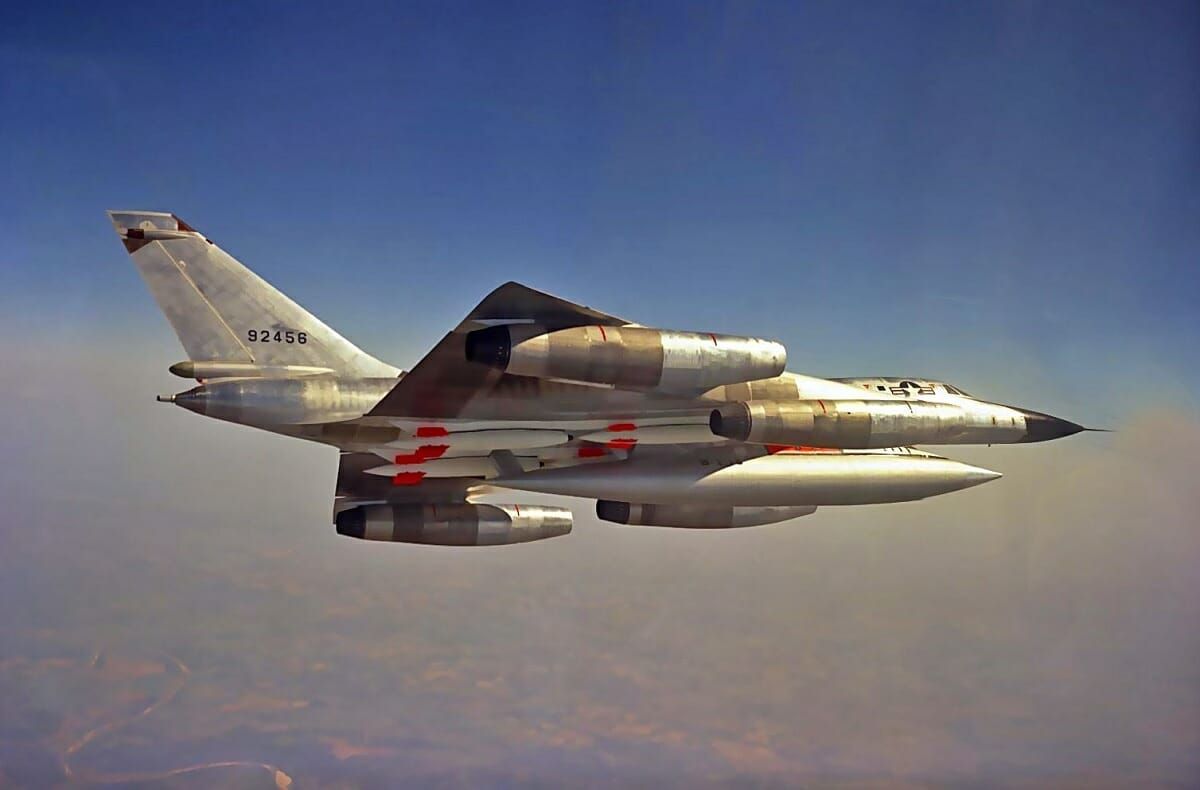
Crews started to larn that the aircraft was quite hard to fly, which in turn imposed quite a enervating working surround for its three-homo coiffure. The cost of the B-58 was too enormous, with the program as a whole costing some $3 billion through the 1961 fiscal twelvemonth. Information technology was an infrequent performer, but it was too incredibly complex, requiring specialized basis equipment and a huge boilerplate maintenance price of $i,440 per flying hour. This compared to $1,025 for the B-52 and just $361 for the B-47. This is before we get onto the fatality rate of the aircraft, with some 26 being lost in service. That's 22.4% of the total production number.
Gradual Phasing Out And Retirement
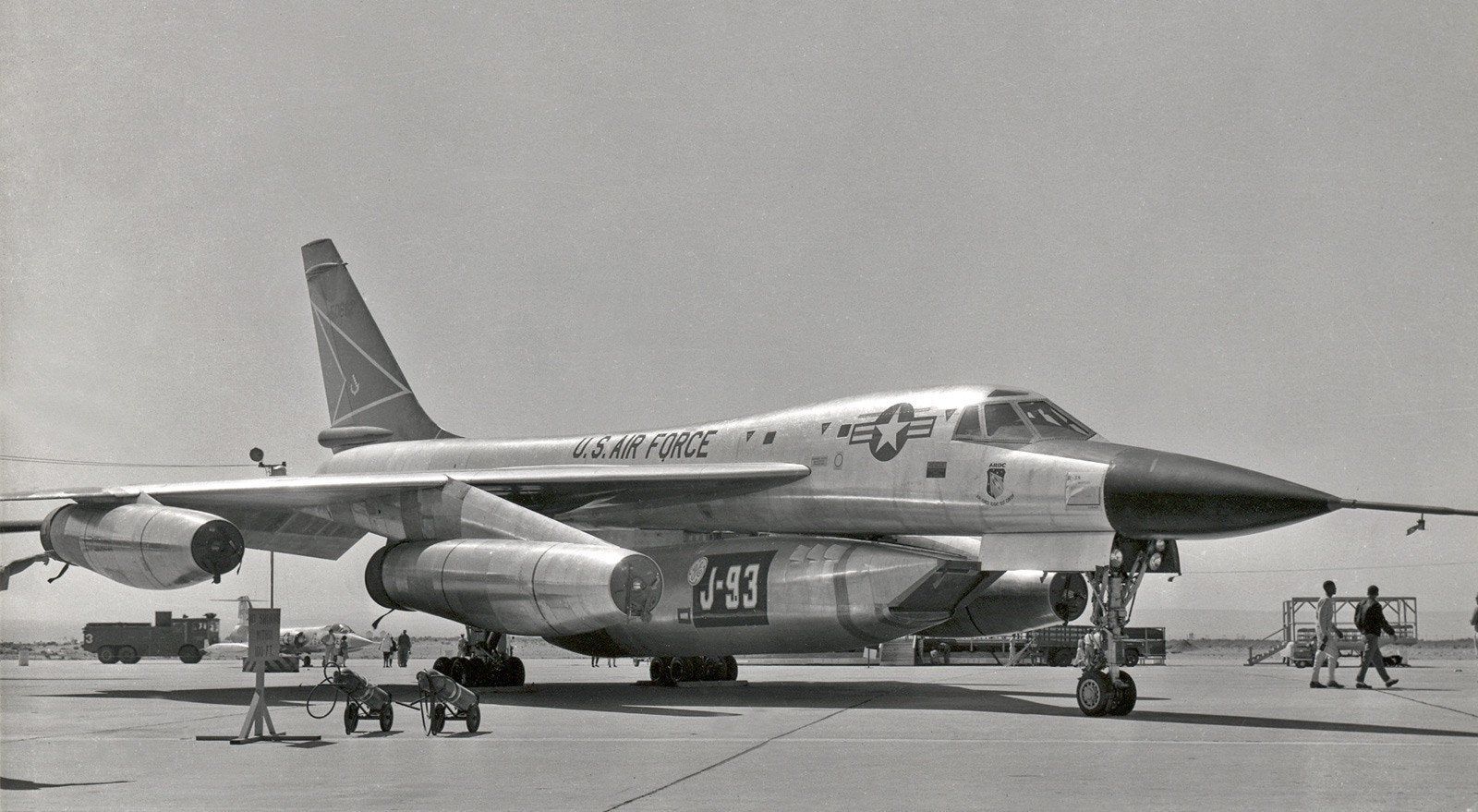
What likewise started to undo the B-58s potential was the treat of more advanced Soviet surface-to-air missiles, such as the SA-2 Guideline. The B-58 was then switched to low-distance operations, but the dumbo air meant the aircraft could non go Mach ane, allow alone Mach 2, and the already modest range of 4,100 miles was further reduced by the low level flying. This all negated the plush evolution to brand the aircraft Mach 2 capable. Information technology did though have some allies in service, such as Full general Thomas S. Power, who hoped to have the aircraft put back into production when a requirement for a new Mach ii bomber emerged. Withal, it was appear in 1965 by Secretarial assistant McNamara that the type would exist retired on January 31st, 1970. The B-58 would ultimately be replaced past the FB-111A Aardvark.
The End Of The Line For The Hustler
Despite pushes to continue the aircraft in service, the phaseout continued on schedule and the final B-58s were retired in January 1970 and the whole fleet survived intact at the Military Aircraft Storage and Disposition Center at Davis-Monthan Air Strength Base of operations until 1977. Eight B-58s take survived today in museums, including record Greased Lightning at the Strategic Air Control & Aerospace Museum near Ashland, Nebraska. It might have had its shortcomings, but the B-58 was one of the most remarkable shipping of the entire Cold War, and Convair should exist applauded for making ane of the very few supersonic strategic bombers in existence.
Sources: The Aviation Geek Club, Aces Flying High, Wikipedia, National Interest, Reddit, Air Force Times
How Long Was The B 58 In Service,
Source: https://www.hotcars.com/this-is-why-the-b-58-hustler-wasnt-a-successful-bomber/
Posted by: greencomplew.blogspot.com


0 Response to "How Long Was The B 58 In Service"
Post a Comment